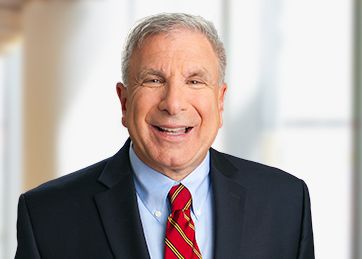Patients, payers, and manufacturers’ drug coupons
According to PBMs, those drug coupons are something else.
Nothing in life is free. That aptly applies to manufacturers' drug coupons, which can entice consumers into using high-cost medications over equally effective generics and lower-cost brands. These coupons sound good on paper for both manufacturers who sell more products and for patients who pay less for a high-priced new product. But payers and pharmacy benefits managers are not impressed.
See also: PBMs, wholesalers, and contracts 101
How coupons work
Manufacturers use drug coupons, often referred to as copay coupons, to reimburse insured patients for copayment costs associated with new, high-priced drugs. Coupons enable manufacturers to gain additional consumers, create brand loyalty, promote products, and develop a competitive edge.
At the same time, manufacturers can assert that consumers are saving money, receiving access to an innovative drug, and improving adherence.
Coupons are distributed to physician offices and also are available through online, TV and print ads, at pharmacies and through direct mail campaigns. Coupons were available for 395 indications in 2012, up from only 86 in 2009, according to IMS Health.
A 2013 analysis reported in the New England Journal of Medicine estimated that 62% of coupons studied were for branded drugs for which lower cost alternatives were available.
Medicare and Medicaid beneficiaries cannot use copay coupons; they are considered to be remuneration to consumers to induce purchases, which implies violation of an anti-kickback statute.
See also: OIG warns pharmacies about drugmaker coupons
Costly consequences
Patients readily use coupons, which cover their copayments for drugs that their insurers have placed on high formulary tiers to dissuade use. Little do consumers know that insurers are picking up the tab beyond the copay.
Unfortunately, once the coupons
expire, generally after three months to a year, patients are stuck paying more out of pocket for the same drug, and payers might be hard-pressed to rein patients in and convince them to start a regimen on a lower cost equivalent medication. The result is often higher premiums or copayments to compensate for the higher costs incurred by payers for specialty drugs offering a coupon.

David Friend
"A coupon is just a subsidy; once it runs out, patients will be paying more for the drug than if they were taking a less costly equivalent from the beginning," said David Friend, MD, chief transformation officer and managing director, at the BDO Center for Healthcare Excellence & Innovation. "A coupon could override a plan's attempt to prevent a prescription for a high-cost drug."
Coupon programs allow manufacturers to sell their products with a large margin through heavy advertising, while helping consumers overcome economic hurdles, Friend said. "They alter consumer purchasing behavior."
A 2011 study by the Pharmaceutical Care Management Association (PCMA) indicated that copay coupons would increase 10-year prescription drug costs by $32 billion for employers, unions, and other plan sponsors. Each year, $4 billion is spent marketing copayment coupons, which yield a 6:1 return on investment, according to the study.

Mark Merritt
"Copay kickback schemes increase drug costs by undermining the formularies used by employers, unions, and public programs," said Mark Merritt, BA, MA, president/CEO of PCMA, who provided testimony last February before the Committee on Oversight and Government Reform on rising drug costs.
"These [copay promotions] are not means tested or designed to help the poor or uninsured. Instead, they are designed to encourage insured patients to bypass less-expensive drugs [which typically have lower copays] when multiple options are on the formulary, raising the cost of drug coverage," he said in his testimony.
Many payers, such as employers and insurers, say the practice uses a "shadow claims system" that prevents them from knowing when the coupons are being used. They also take manufacturers to task for gaining information about coupon users by requesting personal information prior to redemption.
Provider influence
Providers consider drug coupons to be an opportunity to prescribe newer and potentially more-effective products without their patients incurring financial barriers.

Alynn Purdum
Alynn Purdum, PharmD, director of pharmacy for SummaCare, a provider-owned health plan, said that coupons were not an issue until the arrival of high-cost specialty pharmacy drugs in the marketplace.
"We want our members to have the drugs they need, so when physicians appeal our denials of these more expensive drugs, even when an equivalent and less costly one is available, we usually approve the appeals," said Purdum.
"Our hands are tied, because in most cases, providers need to give a reason why it would not be appropriate to use a preferred/formulary agent [e.g., allergies, counterindicated for obese patients]. For these cases, providers often state that a patient needs to use a coupon because they cannot afford the copay for the preferred/formulary drugs," she said.
Friend wonders why formularies are in place if insurers let physicians prevail. "It's necessary to educate doctors about why they shouldn't prescribe a drug just because it has a coupon
attached," he said. He sees the situation as a potential competition between best care and a manufacturer's profits.
Purdum maintains the importance of a formulary because she said her plan still wants to steer patients toward its preferred products.
Payer strategies
Payers have developed strategies to keep rising drug costs at bay, tiered formularies, prior authorization, step therapy, medication therapy management, many of which are being undermined by coupon programs.

Adam Kautzner
"Manufacturers using coupons are able to circumvent payers' utilization management or formulary management programs for certain drugs," said Adam Kautzner, PharmD, vice president, formulary solutions, Express Scripts.
Drug companies could use coupons to get patients started on their drugs and demonstrate condition stabilization, making it difficult for utilization management programs, such as step therapy or prior authorization, to play a role, he said.
"To patients, coupons look like a good deal to save costs, but they don't see the ramifications for total costs, such as premiums, which become more
expensive to offset higher cost drugs," said Kautzner. "When patients only pay a $10 copayment, they are artificially insulated from the real cost of a drug and the difference between a generic and a non-preferred brand."
Kautzner said that some of the discount cards cross Express Scripts' radar, enabling the PBM to discuss them with manufacturers and introduce management strategies so that companies cannot get around payers' utilization management programs.
The PBM has a few tricks up its sleeve, including hard edits to reject a claim and denying coverage of some drugs. Starting in 2015, it has banned more than 40 medications, partly because of drug coupons. Some insurers, such as UnitedHealthcare, have denied the use of coupons for a number of specialty drugs.
Today, every state allows drug coupons. Massachusetts, the last holdout, began allowing them in 2013, and will continue to do so until at least July 1, 2017. According to a 2012 PCMA report, permitting the use of copay coupons would increase drug costs for Massachusetts' employers, consumers, unions and state and local governments by $750 million over the next 10 years.
[Editor's note: This article first appeared in the May 2016 issue of Managed Healthcare Executive, a sister UBM Americas publication.]
Mari Edlin is a freelance writer in Sonoma, Calif.